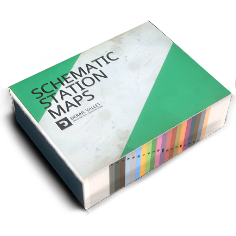Translations:Brake Shoes/1/en: Difference between revisions
Importing a new version from external source |
(No difference)
|
Revision as of 15:34, 28 February 2025
Brake shoes are metal parts located next to the wheels on rolling stock. They are the main means of stopping, used by the train brake, independent brake and handbrake braking systems. The braking is achieved using friction to convert rotational energy of the wheels into heat. Brake shoes are pushed against the turning wheel surface, heating up in the process and slowing the vehicle down. With excessive use, for example when taking too heavy trains downhill at a high enough speed, the brake shoes may overheat. While in this state, they glow and make a metallic chime noise. Their braking ability is weakened and restored only once the shoes cool down again. Depending on the grade and other factors, if brake shoes overheat, a train may start gaining speed uncontrollably, resulting in a runaway disaster.
